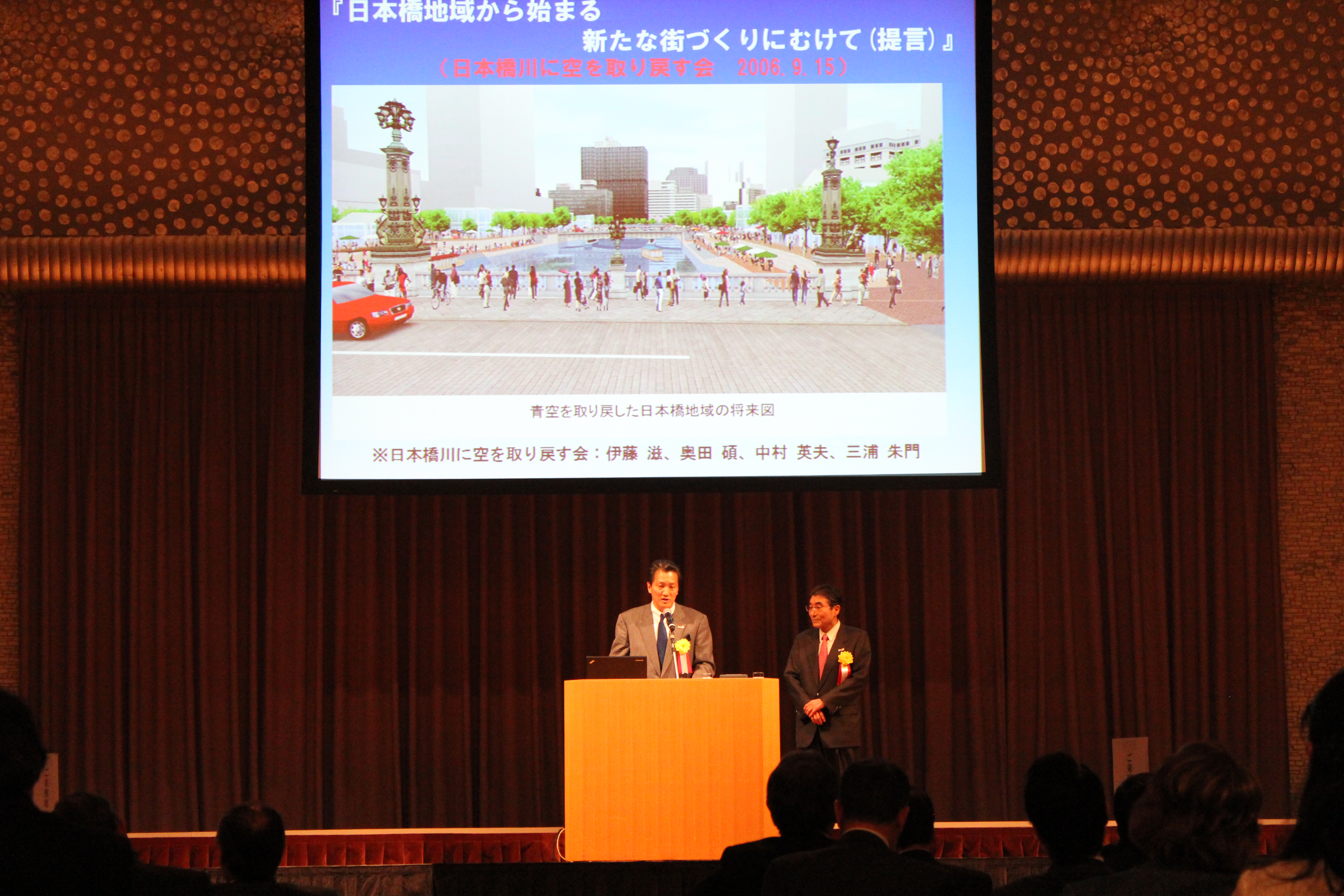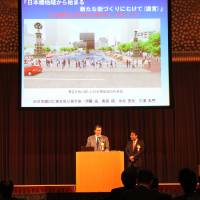Business executives said Wednesday they will continue to call for burying Tokyo's elevated expressways, including the section over the famed Nihonbashi Bridge, to restore open views and make the capital more scenic.
"The expressway section was constructed over the Nihonbashi River in 1963 before the 1964 Tokyo Olympics and the cluttered structures (over Nihonbashi Bridge) have impaired the attractiveness" of the district, Katsuyuki Minegishi, a member of the Rotary Club of Tokyo Nihonbashi, said at a seminar in Tokyo.
Civic groups in the historic Nihonbashi area have been seeking to restore the traditional ambiance since 1968, said Minegishi, adding that many Rotary members are also involved in these efforts.
"It is 50 years since the expressway section was built. We'd like to figure out a way to address the expressway over Nihonbashi Bridge in light of the 2020 Olympics and Paralympics," he said. "We'd like to show a new landscape surrounding Nihonbashi Bridge" in 2020.
A historic landmark, Nihonbashi Bridge was designated as a cultural property in 1999.
Work on the Metropolitan Expressway, which currently stretches about 300 km, started two years ahead of the 1964 Tokyo Olympics. The elevated sections in the heart of Tokyo, officially called the Inner Circular Route, were hastily constructed over rivers and surface streets as there was no time for negotiations with landowners.
Tokyo's local Rotary Club chapters have called for the elevated sections to be buried 60 meters below the surface.
Their proposal to build a 50.4-km underground highway network would cost some ¥3.8 trillion.




